Reviews
What I’m Looking at: Chryssa’s Electric Tribute to Times Square, the MyPillow Guy’s Office Paintings, and Other Things at the Edge of Art
Highlights from New York galleries from the last few weeks.
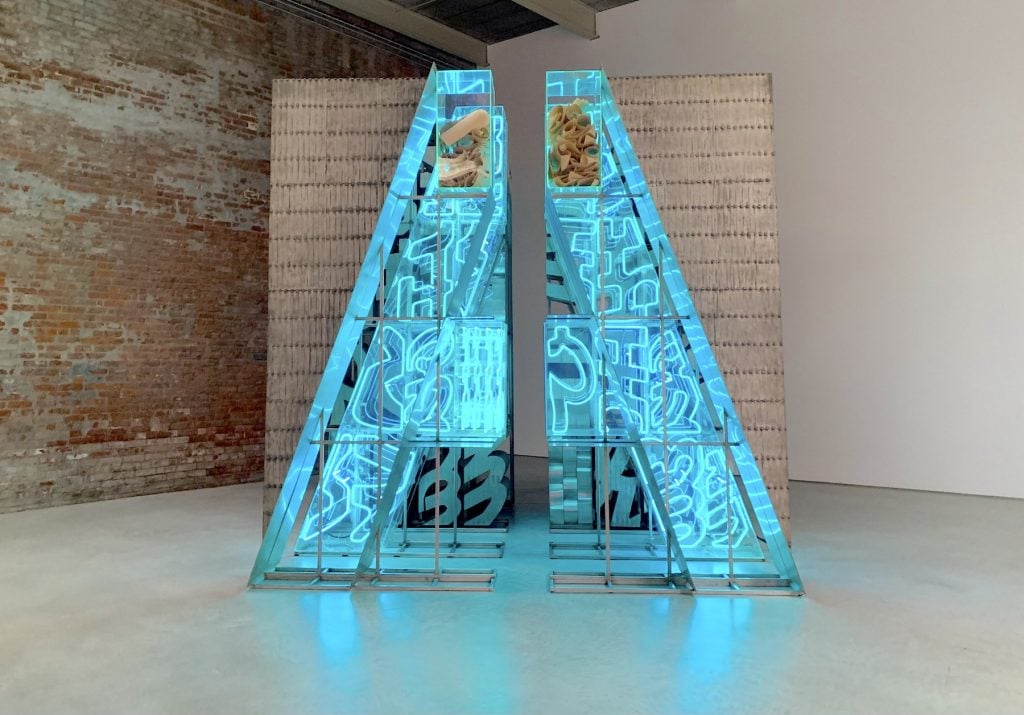
Highlights from New York galleries from the last few weeks.

Ben Davis

“What I’m Looking at” is a monthly column where I digest art worth seeing, writings worth consuming, and other tidbits. Below, thoughts from the first weeks of July 2023.
I only really knew the name of Greek-born sculptor Chryssa (1933-2013) before this big show dedicated to her New York output, currently at the Dia Art Foundation in Chelsea (co-created with the Menil Collection in Houston, and on view through July 22, 2023). What fun to get a full sense of her! In the 1950s and ’60s, Chryssa breathed in New York’s energy, and breathed it out as art. She took inspiration from material that evoked the swirling, information-dense urban environment: newspapers, typography, neon signs. Then she stripped away their information-conveying function, distilling and abstracting their forms into reliefs and sculptures that become mysterious, austere, and transfixing.
Her act of going by the mononymn “Chryssa” itself mirrors her artistic procedure of subtraction and abstraction: adding to a signifier’s evocative power by stripping it down and making it mysterious. It also suggests a certain swagger, of course. The sculpture that best incarnates this appetite is her magnum opus, on tour here from the Buffalo AKG Art Museum collection: a 10-by-10 hulk called The Gates to Times Square (1964–66). It is a glorious abstracted “A,” in sizzling blue neon. It wants to stun you as a distilled version of the grandeur of New York’s commercial center, while also conveying the mystery of an altar of secret texts held just out of reach.
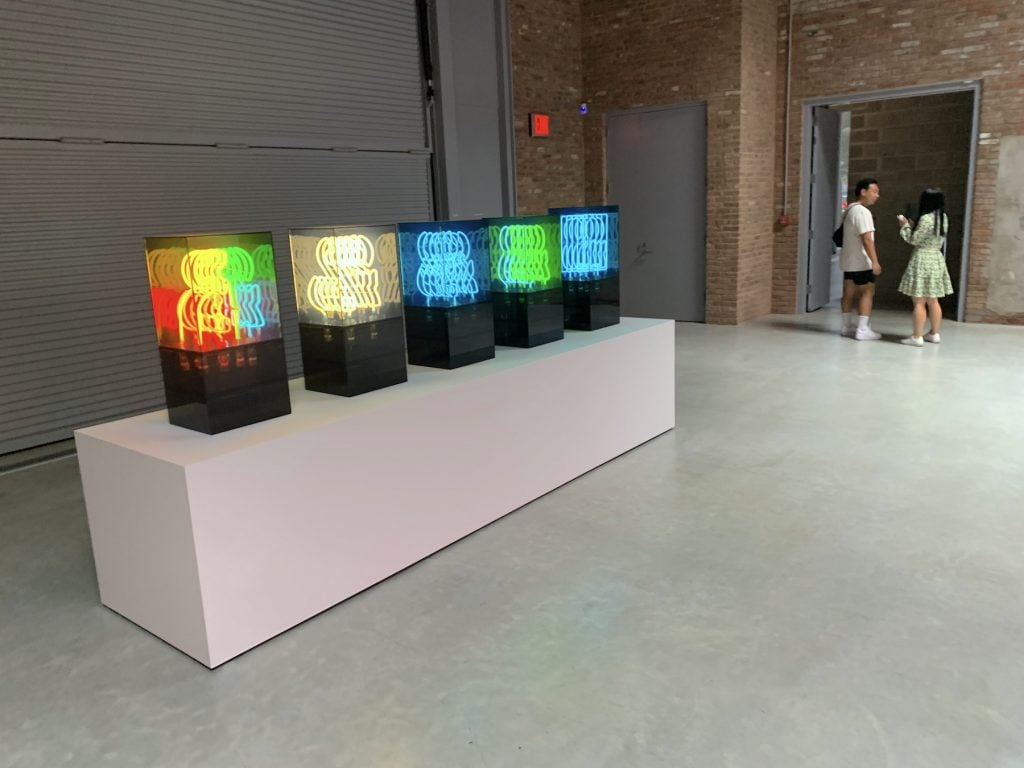
Chryssa, Five Variations on the Ampersand (1966) in “Chryssa and New York” at Dia. Photo by Ben Davis.
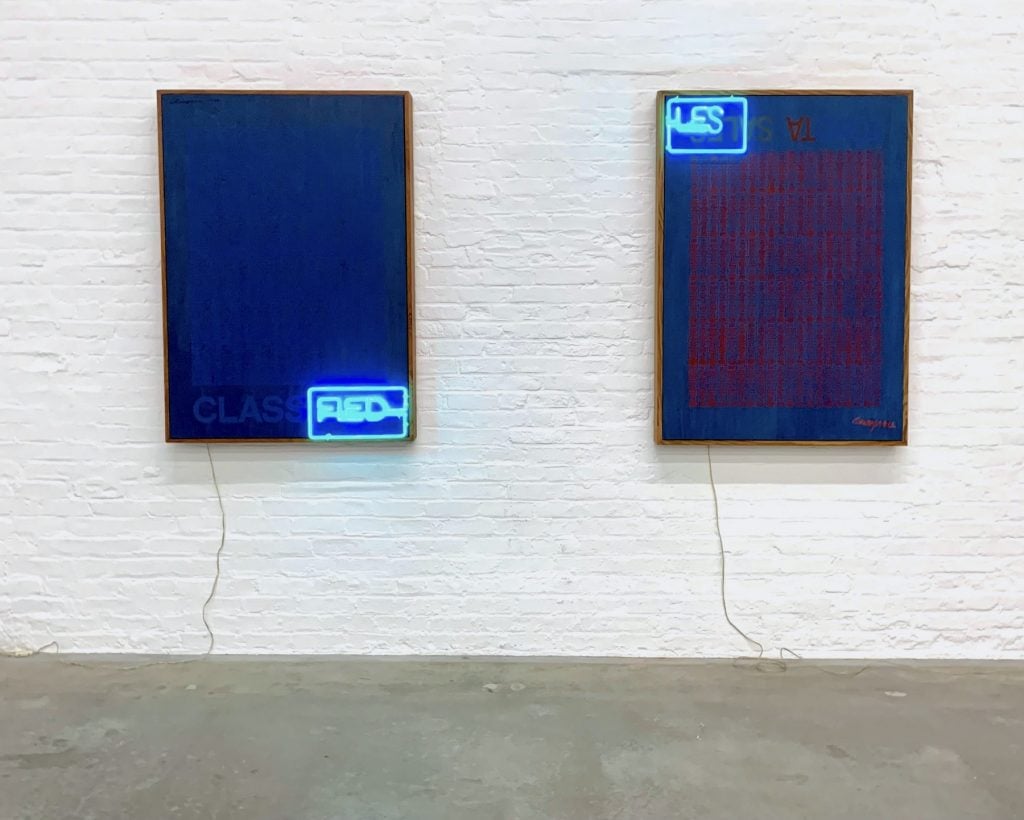
Chryssa, Classified (1960). Photo by Ben Davis.
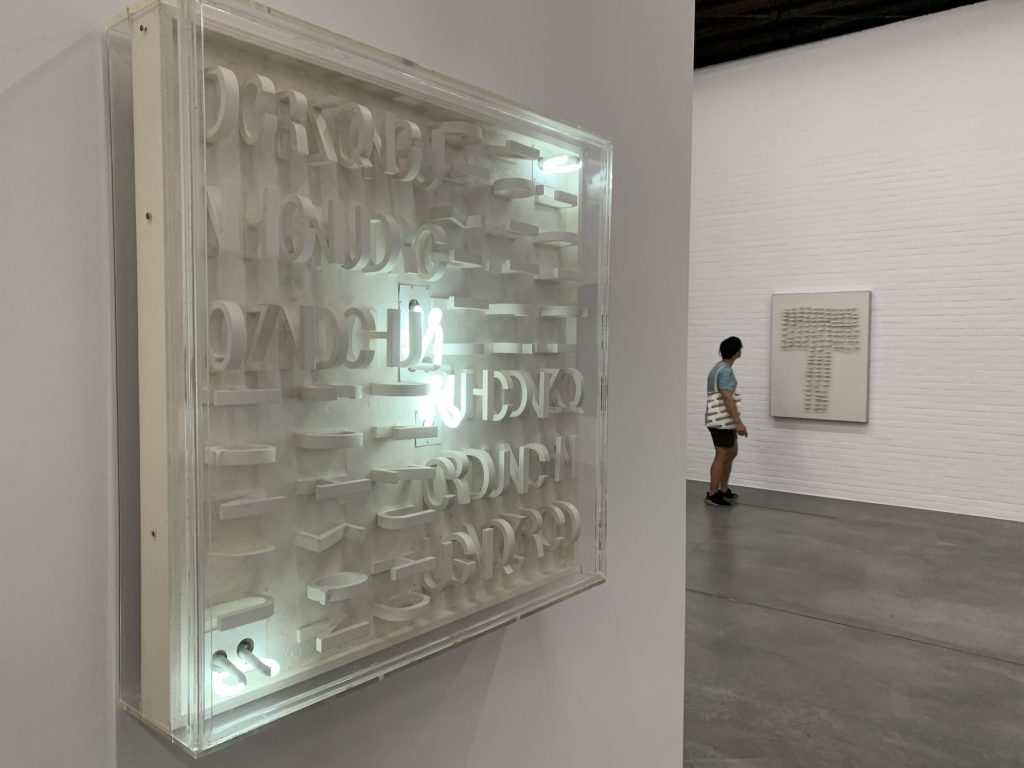
Chryssa, Cycladic Movement (n.d.) and Letter “T” (1959). Photo by Ben Davis.
The tightly packed one-room show dedicated to Warhol superstar Brigid Berlin does contain things you’d call art, ranging from Berlin’s raucous “tit prints” (made by dipping her breasts in paint and smooshing them on paper) to the needlepoints of lurid New York Post covers from her latter days. But “The Heaviest” at Vito Schnabel (on view through August 18), organized by Alison M. Gingeras, is really more akin to immersing yourself in a “Brigid Berlin” exhibit at a museum of Downtown history.
So you get cases of letters and pictures from her childhood as a rebellious heiress (her dad was CEO of the Hearst Corp.); newspaper articles about her as the flamboyant character that she still was in her post-Factory life; a video made with Warhol and Larry Poons documenting her breast-based art-making practice accompanied by her own gregarious, self-mocking commentary.
It’s actually fitting that the show runs together Berlin’s art and material about her as a character, in a way: Berlin didn’t really seem to distinguish art-making from living an interesting life. In copious, seemingly continuous Polaroids, she documented the characters around her in the Factory, some of which you can see here. You can also listen to tapes she made of phone calls with intimates and associates. Berlin seems to have recorded everything—both because it was interesting and as a way to make it interesting.
The show is a fascinating look at a life. As to the art as art, the evidence of the show leaves me feeling of two minds. On the one hand, it does feel like appreciating Berlin’s output depends substantially on your interest in a certain form of micro-celebrity. But, then, this self-mythologizing sensibility does resonate now, feeling very contemporary in its indulgent eclecticism, defensive bravado, and undercurrent of melancholy.
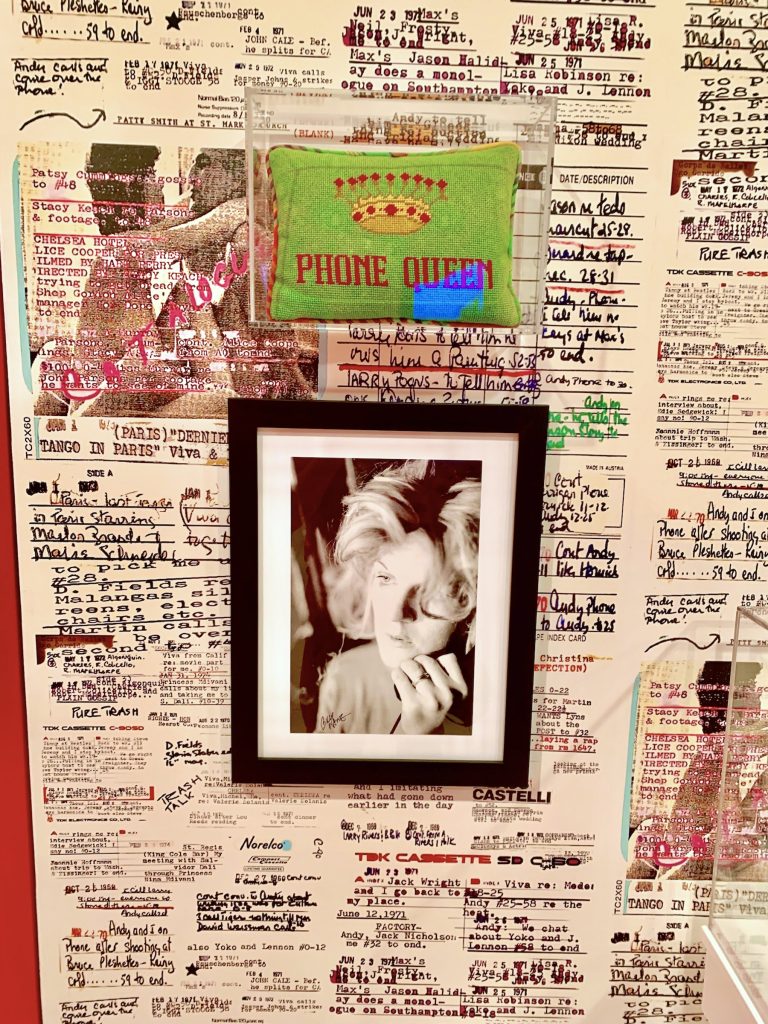
Brigid Berlin material in “The Heaviest.” Photo by Ben Davis.
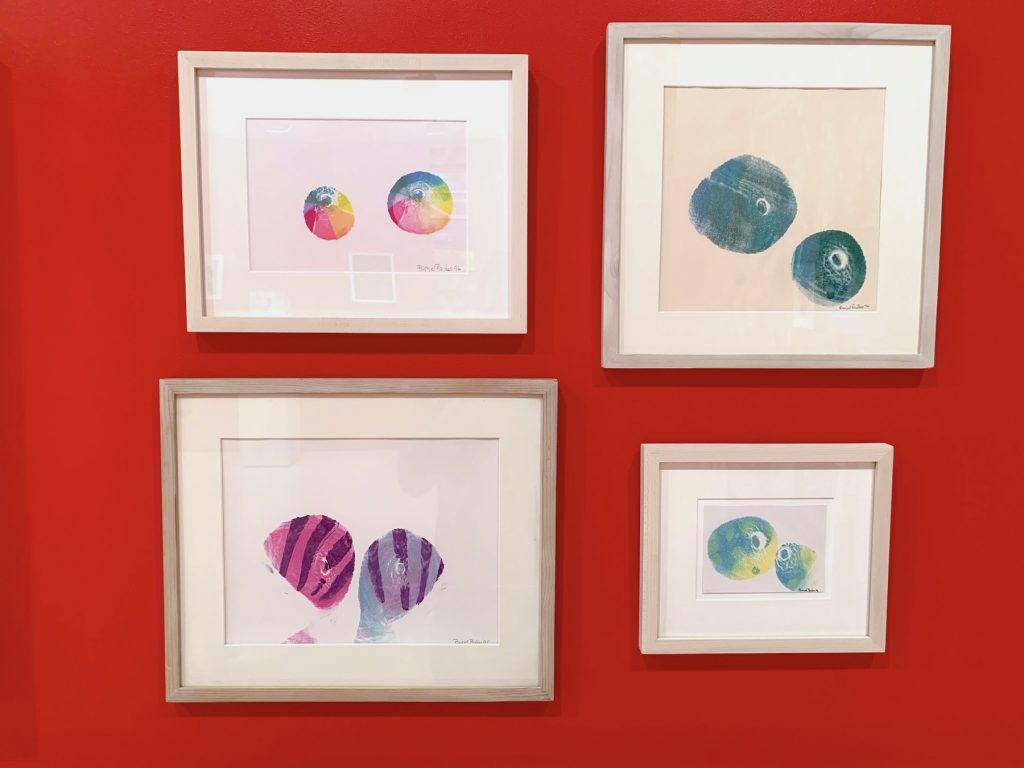
Four of Brigid Berlin’s “Tit Prints” in “The Heaviest.” Photo by Ben Davis.
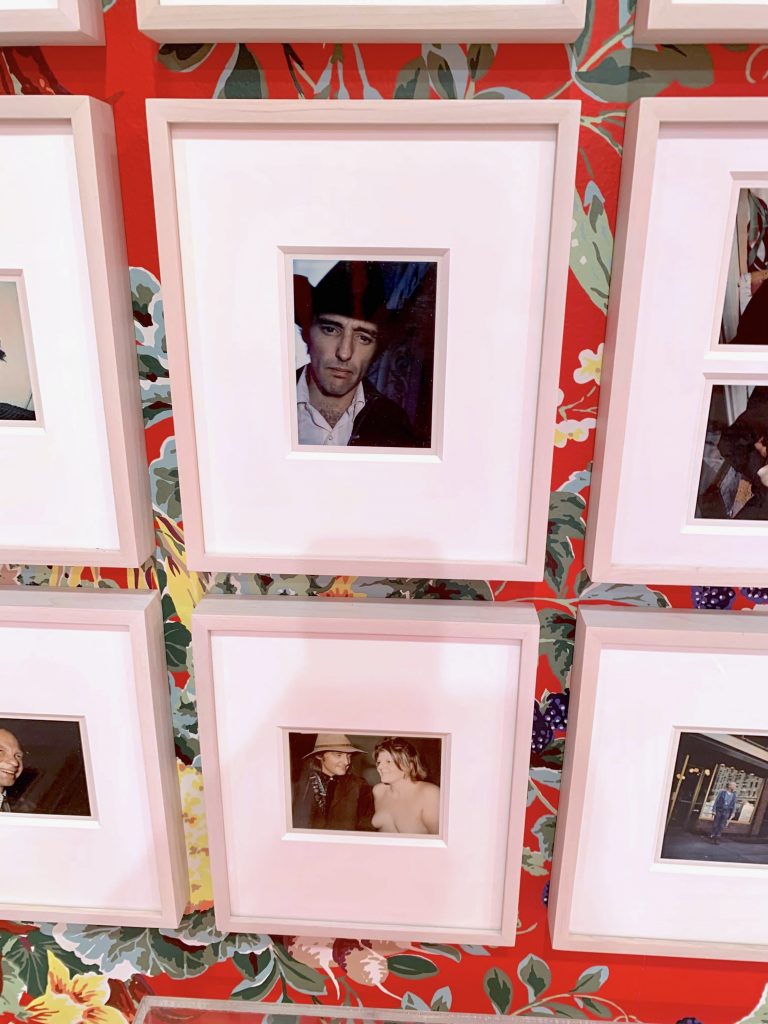
A Brigid Berlin Polaroid of Dennis Hopper in “The Heaviest.” Photo by Ben Davis.
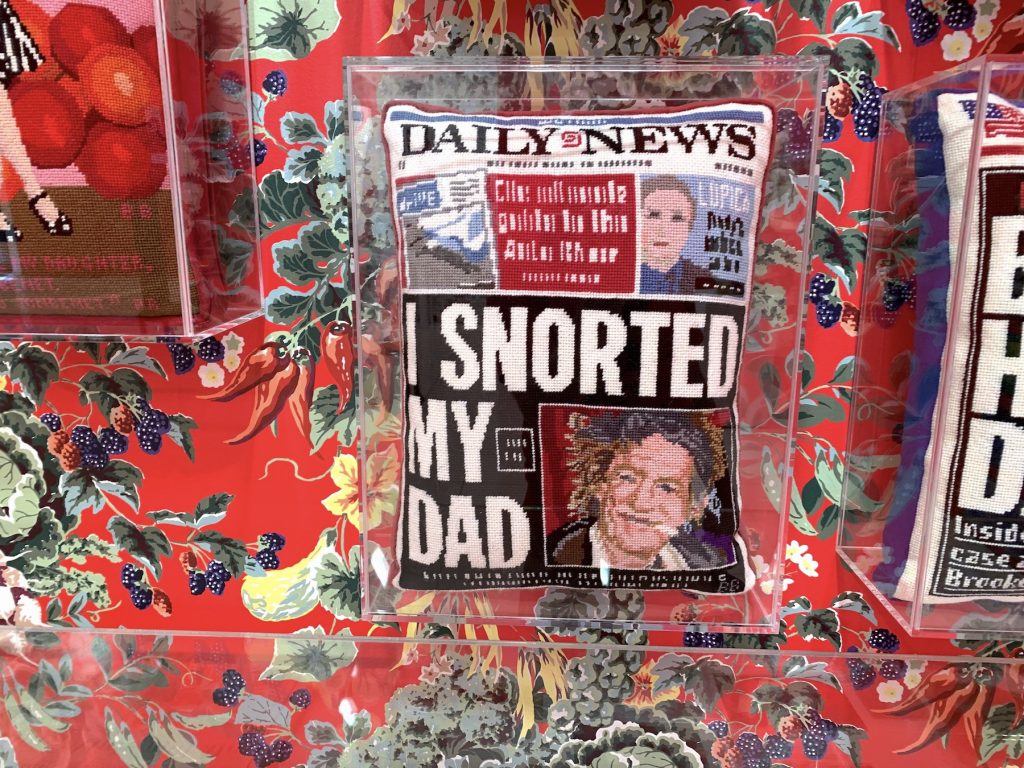
Sampler by Brigid Berlin in “The Heaviest.” Photo by Ben Davis.
I wandered, basically at random, into Fierman gallery to find a one-weekend-only display of Nora Griffin’s paint-on-vintage-shirt art show. Griffin, a maker of wonky abstract paintings, had applied her groovy, whirling colors a collection of various New York-themed tees, all hailing from the pre-9/11 era. The vibe of approachable thrift-shop creativity combined with low-key nostalgia for a vanished era of the city made it all feel like you had time-traveled momentarily to a simpler, sunnier, nicer scene—one that you could walk away with a piece of, to boot.
You missed the show, but the shirts have their own Instagram, so join the 1999 NYC Tee club while you can.
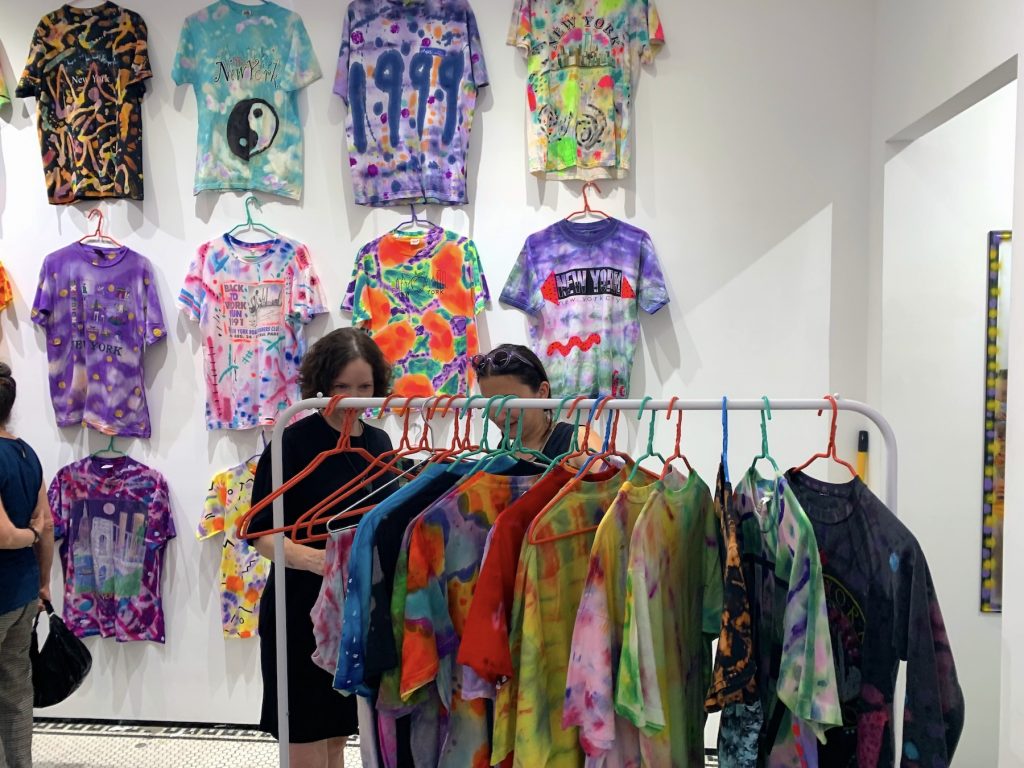
Installation view of Nora Griffin’s “1999 NYC TEE” show at Fierman. Photo by Ben Davis.
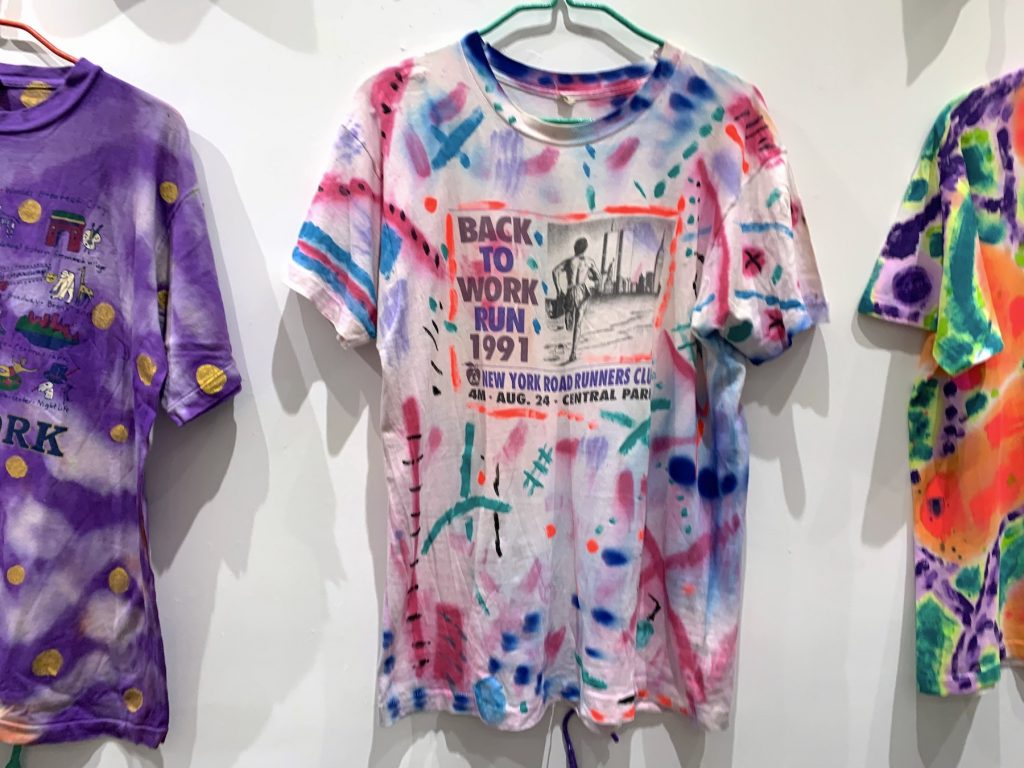
A Nora Griffin tee. Photo by Ben Davis.
As to things to read… the art world is embracing Threads, according to Annie Armstrong’s piece on the Whitney Museum going “full internet” with its quippy foray into the new social media network. So we have to deal with Threads, I guess.
Kate Lindsay’s post for the Embedded newsletter, pungently titled “Threads Is a Mecca of Millennial Brain Rot,” sums up my experience of Meta’s new social media platform, and of social media altogether right now—everything feels like different flavors of desperate:
When I first opened the app, I expected to see an early-Twitter copycat. Instead, I was met with a feed of users parroting robotic and emoji-laden prompts, the same four jokes about being “unhinged,” and, of course, a car giveaway from Mr. Beast. Given the opportunity to build the social media culture we say we’ve been missing, we immediately resorted to posting the worst clichés from today’s internet. Is this post from a person, or a brand? Because they’re both employing the same hokey syntax to post empty engagement-bait.
This behavior says something about how we view social media now. It’s not for connection, but performance. It seems that many of the people who rushed to download this app did so to get in early on a rush for potential new followers, and in so doing, adopted digital personas that bear no resemblance to how a single human talks in real life. After years of being subliminally nudged towards this behavior through algorithm changes on other platforms, when given the opportunity to do something different on Threads, we came running back to the bland platitudes and low-hanging fruit we’ve been conditioned to rely on for engagement.
I feel it would be better just to admit that this form of communication has failed than to try to get back to some imaginary “good” version of it. But that’s me, and that’s probably not going to happen.
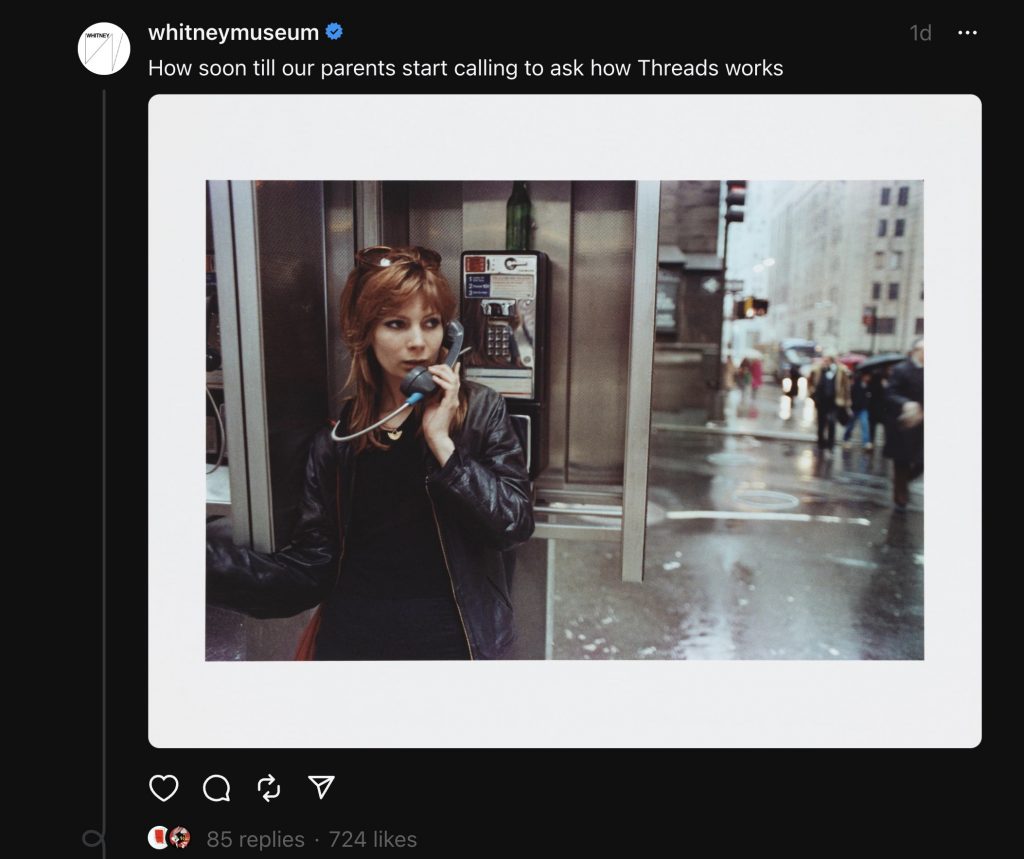
Screenshot of a Threads post from the Whitney Museum using Allen Frame, Cady Noland, phone booth, NYC (1981) as a meme.
Mike Lindell, the CEO of MyPillow, Inc.—known around the web as the “MyPillow Guy”—is selling off his company’s stuff on K-Bid Online Auctions, having wasted his empire’s actual and reputational capital on trying to overturn the 2020 election. So of course, I went to check if there was any art. And there is, sort of.
It’s a lot of pretty ordinary framed images of plants and landscapes and such. If you have a suburban bathroom to decorate, you have a week to place your bids.
I do love this still-life, below, presented with no info on what you are looking at but with the accompanying detail shot of the signature to show the authenticity of whatever that is. I’ve always wanted to own a… “ufiloojp[??]”
Really, it is like owning a piece of history: Seizing on random, blurry, unconvincing details to claim something is real is kind of what Lindell is known for now.
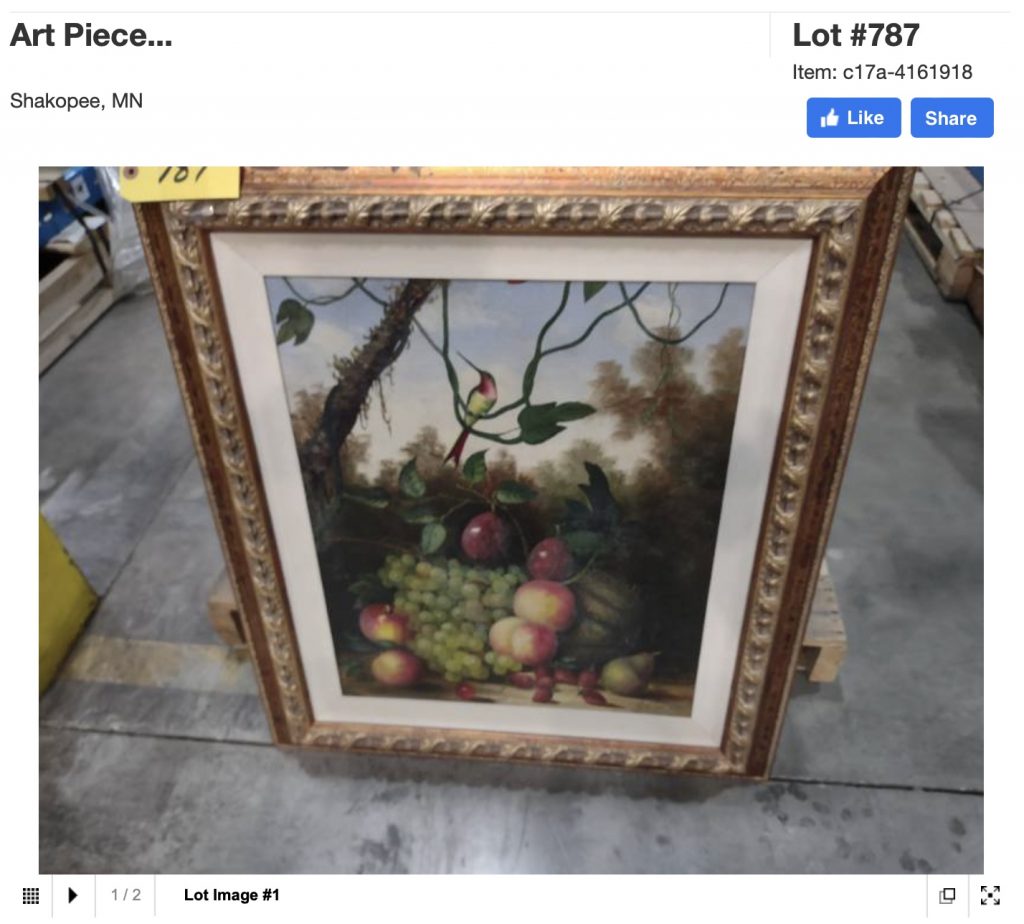
Screenshot of an artwork being sold in the “My Pillow Surplus Industrial Equipment” sale on K-Bid Online Auctions.
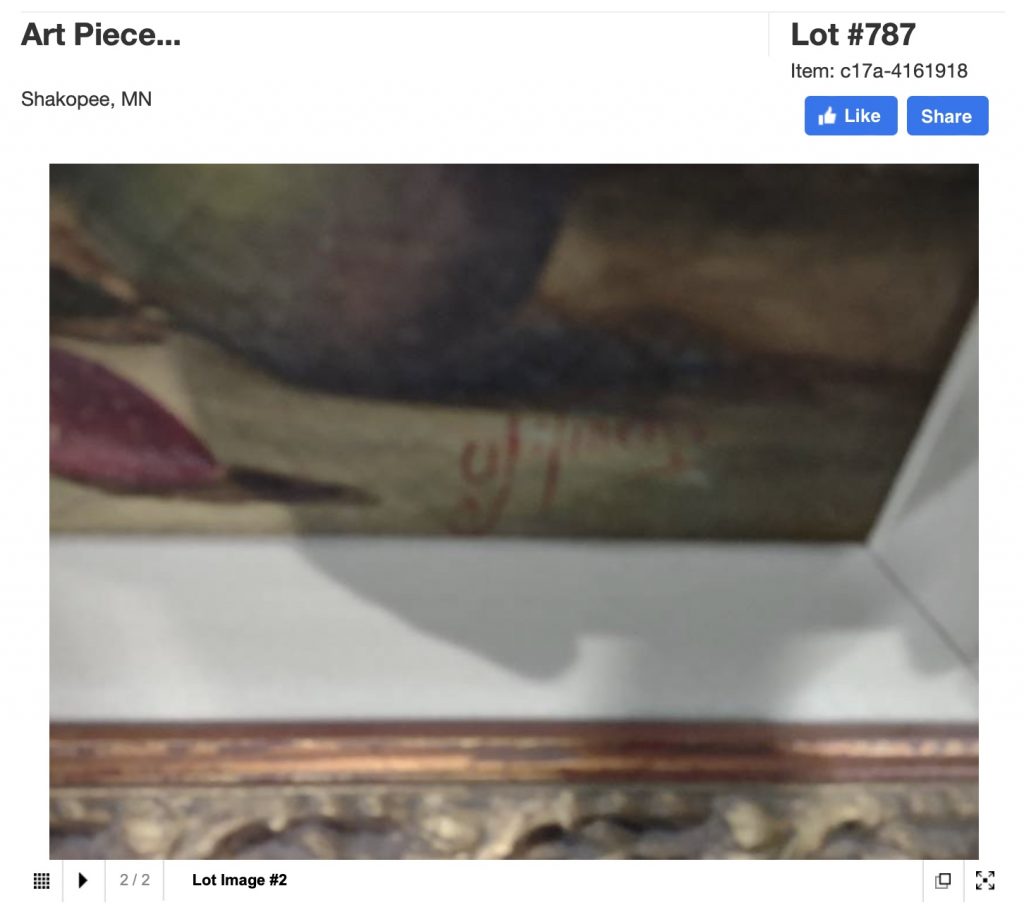
Screenshot of an artwork being sold in the “My Pillow Surplus Industrial Equipment” sale on K-Bid Online Auctions.
More Trending Stories:
An Israeli First-Grader Stumbled on a 3,500-Year-Old Egyptian Amulet on a School Trip